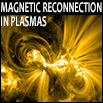Speaker
Ilja Honkonen
(NASA/GSFC)
Description
Due to its multi-scale nature, magnetic reconnection is
difficult to model
numerically using a full electromagnetic description of plasma
in a system whose size
is orders of magnitude larger than the smallest relevant
spatial scales. In the
context of Earth's magnetosphere reconnection has been
modeled using a
magnetohydrodynamic description of plasma for decades
while kinetic effects have
mostly been limited to predetermined spatial regions via
coupling to various
specialized kinetic models. Recently progress has been made
towards modeling the
entire magnetosphere using a kinetic description of plasma
but the required
computational resources are still prohibitive for most
scientists.
We present a method which allows the kinetic effects of ions
to be included in a
magnetohydrodynamic model by representing plasma both as
ions and as a fluid. A novel
aspect of the method is that plasma mass can be distributed
arbitrarily between fluid
and particles, thereby allowing kinetic effects to be included
only in regions of
interest. It is also possible to have a smooth transition
between fluid and kinetic
physics in contrast to existing computational models in which
a discontinuity in
physics exists when transitioning between regions of different
physical descriptions
of plasma. By varying the fraction of plasma mass
represented by particles it is also
possible to gain insight into the physical effects required for
and produced by
various phenomena such as magnetic reconnection.
Author
Ilja Honkonen
(NASA/GSFC)
Co-author
Alex Glocer
(NASA/GSFC)

